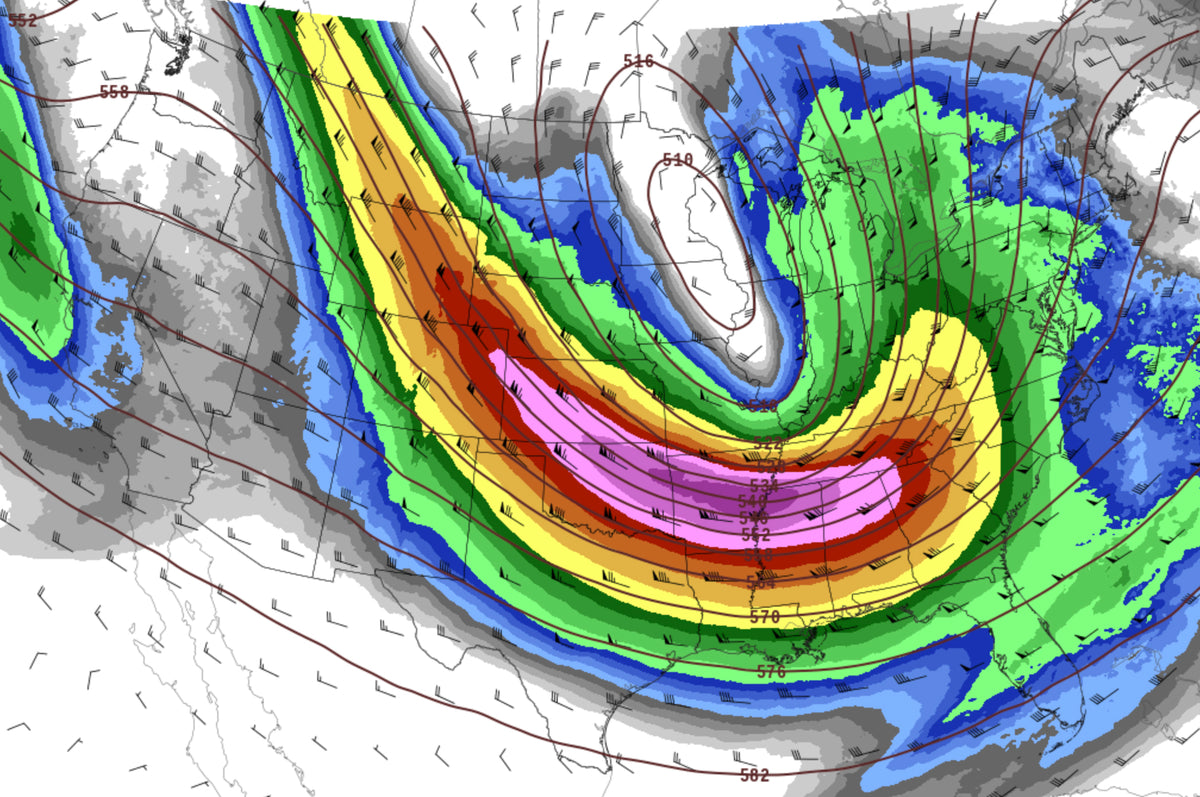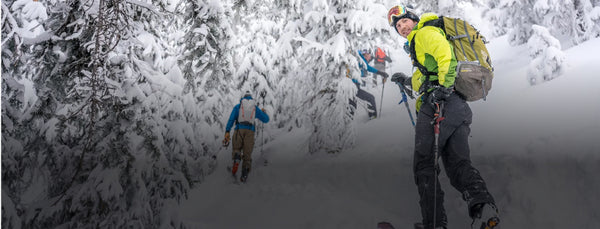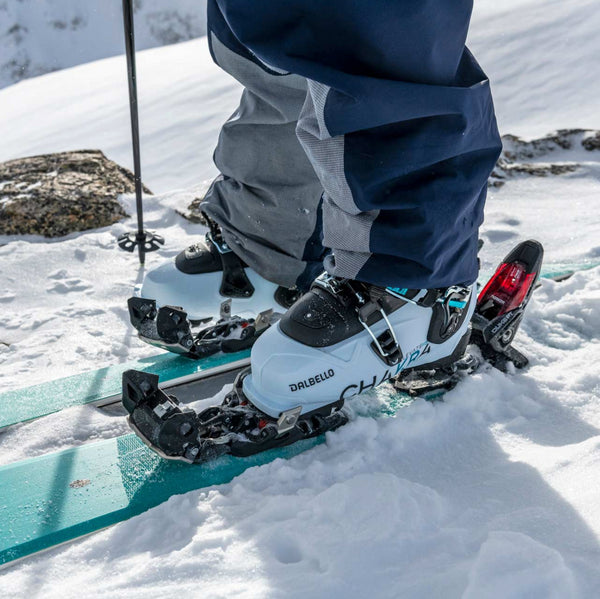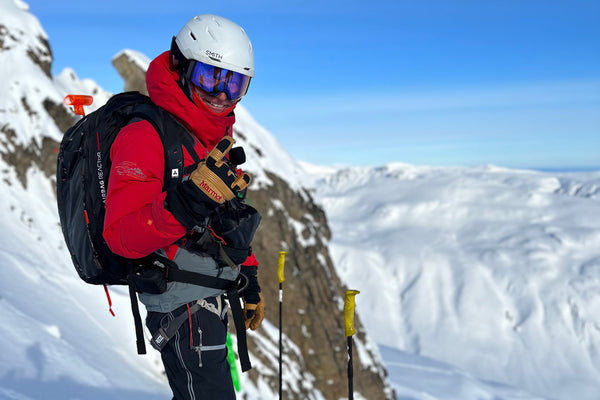
A SKIER'S GUIDE TO PREDICTING A POWDER DAY
Like most skiers, we love powder.
We get giddy hearing that snow is slated to hit our home resort, can pack the car at a moment’s notice to hit the road for fresh tracks, and have internet bookmarks that look like those of your local weatherman. When the early season, long-range forecasts hit the airwaves, it only increases the anticipation for the season to come.
But what do we really need to know about forecasting and predicting where and when all the biggest storms are going to hit? We caught up with OpenSnow’s Meteorologist Joel Gratz to find out the answers to our questions.

Getting DEEEEEEEEEEEEP in the snow.
Gratz let us know a few important things to keep in mind prior to storm gazing:
-
Don’t pay attention to long-range forecasts (3-6 months). They really aren’t a reliable source of which areas will get the most snow over a season, let alone certain months or even weeks.
-
The more flexibility you have, the better your chances of scoring pow.
-
Be prepared for everything and anything.
-
When in doubt, toss a coin.
Now that you know the basics, here are a few rules and resources to get you started as this winter’s weather pro.
Rule 1: Know the game and play your strengths
If you can’t make last minute adjustments to your ski trip, keep your weather expectations mild. If powder doesn’t show up, it’s good to have a list of alternatives or fun ski challenges. For example, try skiing every run on the mountain or riding every lift. Don’t beat yourself up if you don’t get the deepest snow.
Rule 2: Everybody gets it wrong sometimes
It’s true, even the pros get it wrong every now and then. The best powder connoisseurs actually don’t have a 100% success rate. No matter what the forecasters say, keep your expectations in check and don’t put too much pressure on yourself.
Rule 3: Quantity can equal quality
If you want to play the game well, you need to prepare for quantity. If you have the ability to chase powder four to six times each winter, chances are you will hit it right at least once. Go as often as you can.

Long Range Forecasting
If you are a month out from your trip, following certain websites will help you keep track of who has the most terrain open, as well as the current base and snowpack at resorts to-date. Here are three helpful tools to evaluate this information:
-
OpenSnow calculates percentage of snowpack average for all your favorite resorts, here is an example of this information for Telluride.
-
Go to bestsnow.net for snowfall history, links to current ski area reports and resort data.
-
Visit SNOTEL for backcountry snow stations across the West to view current snow and precipitation information with interactive maps.
Mid-Range Forecasting
Once you get a little closer to your trip, here’s how to understand where snow storms are tracking: About 10 days out, you are looking for a solid weather pattern, not a powder day. Keep that in mind as you close in on where you are headed, and for how long. In general, be careful looking at 10-day forecasts that don’t show a range of options, these are often inaccurate and can change at a moment’s notice.
Short-Term Forecasting
Within four to seven days, targeting becomes more reliable and planning for your trip becomes paramount. Here’s what you need to know within a week of your trip:
-
Short-range forecasts help target what area to hit, north to Jackson Hole, south to the San Juan’s, west to Lake Tahoe, etc.
-
At this point, you can feel confident about whether snowstorms are coming or not. If they are headed to a certain region, aim for that location.

Go Time
Within two days you can start booking your hotel rooms and heading online for lift tickets. Then, it’s go time:
-
Often times, between two and four days, the forecast doesn’t get a whole lot better, so it’s time to decide if you are going to go for it or not.
-
If you have flexibility, consider heading to a hub—such as Salt Lake City, somewhere along I-70 in CO, Ridgway in the San Juans—etc., so you can choose the resort nearest to that hub with the most snow first thing in the morning.
OpenSnow has additional resources to take note of that can help you become the best weather pro on your block. Here are some pages worthy of a bookmark:
-
Daily Snow Writeups—done by local forecasters with the goal to point you to powder and shed insight on weather forecasts. These are free daily snow and short range forecasts.
-
6 to 10-Day Forecasts—quick and dirty resource to every location you want to ski in America, Japan and Europe. These are only available to paid subscribers, you can sign up here.
-
Snowpack Maps—shows snow coverage compared to the average snowpack. Take a look at an example of Telluride here.
Simply put, pre-season forecasts are not reliable. As your ski trip nears, it is possible to focus in on regions and resorts that have a good base and will, in theory, ski well. The more flexibility you have, the better your chances are of getting the goods. Look for trends and use the time continuum to your advantage. Good luck and let us know how it turns out.
--
This article originally posted in 2016.










